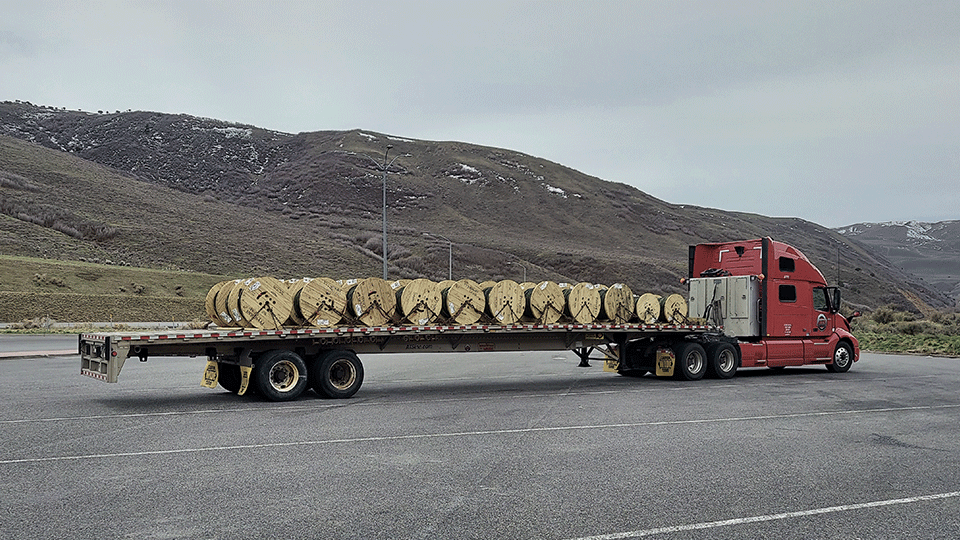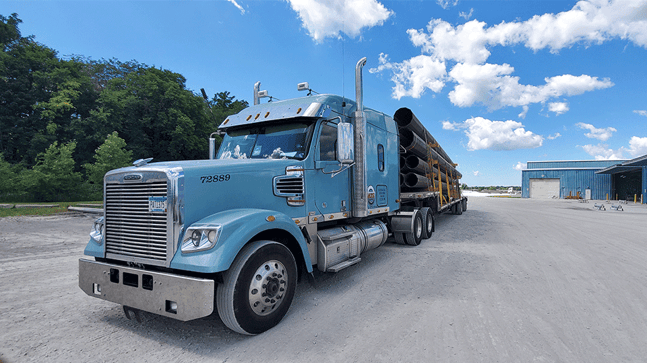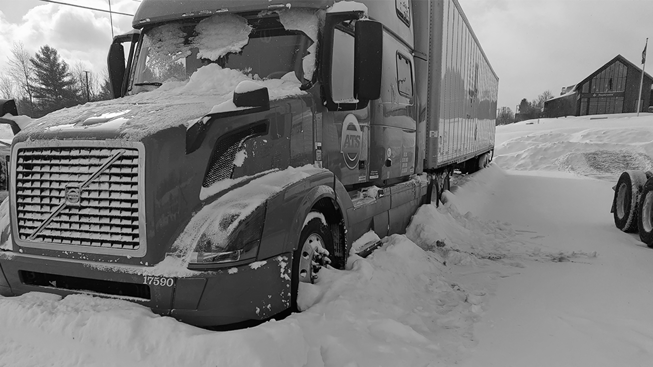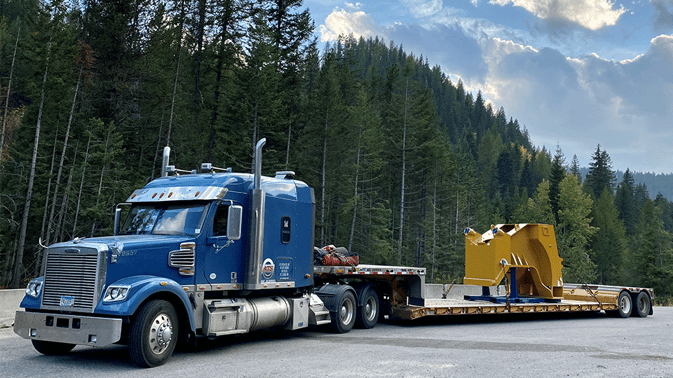
Sometimes, moving freight can be a frustrating process — a fact you know all too well. Struggling to get solid pricing commitments from your transportation providers is more than frustrating though; it’s harmful to your bottom line and reputation.
In the pursuit of making yours a company that always delivers for its customers, understanding the staying power of transportation spot rates is crucial.
Too often, good businesses fall short of their goals and renege on their commitments because the rate(s) they received initially wouldn’t execute their shipment. Instead, these companies face the unfortunate reality of unplanned rate hikes which cut into their take-home margins in exchange for previously agreed-to services.
Although there are plenty of reasons a spot quote may need adjustment, only one of them is most common: spot rates expire.
Without understanding this fact, or how long a typical spot rate is good for, you may face more frustration in the future.
Here at Anderson Trucking Service (ATS), we’ve been spot quoting freight shipments for decades. Whether it’s a 48-foot flatbed hauling steel, a dry van loaded with retail goods or an oversized/overweight generator headed straight to a job site, the spot quotes we distribute are always calculated to get the job done.
But how long are spot rates typically good for? And, most importantly, what can you do to ensure the rates your providers give you will reliably move your freight?
In this article, you will receive three things:
- Insights on how long spot rates are typically good for
- Information regarding what influences this time frame
- One major tactic for ensuring the efficacy of your spot rates.
This kind of information is hard to come by in the transportation industry — perhaps because every load is so different. That does not, however, make understanding the aspects of your spot rates any less important.
How Long Are Spot Rates Typically Good For?
Based on how well the specifications of your load, and all of its complexities, are accounted for in the compilation of your spot rate, expect a legal full-truckload spot quote to be “good” for 10-14 days. This timeframe will change based on current transportation-market conditions and volatility.
To execute your shipment, transportation companies need to ensure that the price you’re paying directly reflects the cost of doing business at the exact time your load needs to move.

That said, over time — due to changes in your local/area marketplace — spot quotes lose their effectiveness. And, instead of sufficiently compensating drivers and covering fuel expenses, older rates don’t match refreshed pricing — forcing providers to increase your price, take a financial hit, or fall through on your load entirely.
Note: spot rates can also decrease as a shipment’s “go” date gets closer. As such, don’t hesitate to reach out for a re-quote if your original rate was received more than 14 days before your projected pickup date. In some instances, refreshing your rates — especially if they’re more than two weeks old — can save you money.
What Causes Spot Rates to Lose Their Effectiveness?
If you’ve ever had a transportation company (freight broker, asset carrier, 3pl, etc.) come back to you with an updated spot price, beyond what they initially agreed to, in order to move your load, this can be frustrating.
In all likelihood, however, this is not an attempt at price gouging. Instead, these are instances where your original quote no longer matches what the market (other shippers in your area) are paying for the same service.
Sure, sometimes this can be chalked up to inexperience on your provider’s behalf — as is the case when individuals are new to this complex industry.
But, in most cases — especially when your initial quote request occurred a week (or more) prior — time and market volatility are to blame.
Though the price of every shipment is subject to many variables, here is a list of the factors that shift both organically and (relatively) unpredictably over time — thereby changing the going rate of transporting freight:
Supply and demand in a shipment’s origin
The total number of trucks willing and able to haul freight with your requirements, compared to the number of other shippers that also need transportation capacity at that time. Supply and demand change seasonally and are influenced by changes in buyer/seller patterns which fluctuate consistently.
Related: How Does Your Freight's Origin Impact Your Final Shipping Price?
The cost of diesel fuel
Fuel surcharges are typically passed through to the driver pulling each shipment to compensate them for the fuel purchased in doing so. Fuel prices fluctuate frequently, causing companies to manage their fuel surcharge schedules in different ways.
Related: An Explanation of How Rising Fuel Prices Affect Transportation (+ 3 Budgeting Tips)
The weather along your freight’s route
Inclement/extreme weather (snow, rain, sleet, heavy wind, etc.) is dangerous for drivers, removing many of them from contending for loads that will take them into areas where these events are present.

Supply and demand in a shipment’s destination
The total number of trucks willing and able to haul freight with your requirements, compared to the number of other shippers that also need transportation capacity at that time. Supply and demand change seasonally and are influenced by changes in buyer/seller patterns which fluctuate consistently.
As all of these price factors lie out of your provider’s control, it is difficult — and sometimes impossible — to predict where they will fall two weeks after a rate is quoted.
For this reason, don’t expect your spot rate to last longer than 10-14 days after receiving it. Anytime your shipment(s) needs to move further in the future, refreshed pricing will need to be calculated prior to its pick-up date.
What Else Impacts a Spot Quote’s Longevity?
The above-listed “organic” price drivers aren’t the only things that impact the staying power of a spot rate. There are several other things — things in your control — that will impact this timeframe.
You see, when formulating your price(s), your transportation provider can only do so through utilizing the information they have — the information you give them.
Sometimes, though, spot rates need to be adjusted because of miscommunication and ambiguity at the time of initial quoting.

If, for example, a flatbed shipment will require tarps but this isn’t specified upfront, the resulting quote wouldn’t include this charge, forcing an amendment prior to loading.
Scenarios like this happen all the time in the transportation industry, aggravating shippers and transportation companies alike. To help you avoid damage to the efficacy of your spot rates, here are a few other things that commonly force spot quotes to change:
Lack of specificity on shipment dimensions
If your carrier doesn’t understand the exact dimensions of your freight, what hope do they have to service it correctly? When freight dimensions are communicated incorrectly or nonspecifically at the beginning, pricing transportation services gets tricky; over-dimensional cargo is more expensive than legal freight.
Lack of specificity on the overall “scope” of the shipment
At the time of the initial request, sometimes transportation companies aren’t given all of the information surrounding the shipment(s) they’ll be moving.
Fully understanding the intricacies of a shipment (i.e., when it needs to load/deliver, the special equipment it will need (tarps, pad wraps, extra straps), the number of trucks required, the total cargo value, etc.) is the only way to price shipments accurately. So, without incorporating this information, spot quotes simply aren’t suited to get the job done.
Changes to a shipment
Spot rates are just that; on-the-spot freight quotes calculated based on what, at the time of quoting, the market dictates is enough to get the job done. Once an aspect, or two, of a load changes — be it delivery date/time, projected route or otherwise — that initial rate will likely need to be amended.
How to Keep Your Spot Quotes Good For Longer
Now that you understand some of the major factors influencing freight-rate longevity, let’s talk about keeping yours around longer. No one likes it when the price they’d been planning for changes — especially with customer commitments looming.
To ensure the initial spot quote you’re given lasts as long as 14 days, there’s one major thing that you can prioritize: be comprehensive, descriptive and specific about your shipments.
That’s honestly it. Great transportation providers have the knowledge, expertise and ability to back their pricing for as long as possible, they just need to properly understand your load.
There’s no such thing as too much information here. Make sure to include all aspects of your freight transit to ensure your quotes are formulated correctly. And, during this process, if you think you might have missed something, be sure to ask your provider what else they need to give you the most long-standing and accurate quote possible.
Looking For Something a Bit Longer Term?
Even if you do everything right when requesting your next spot quote, it’s only going to be good for a maximum of 14, or so, days. Although spot rates are great for executing one-off shipments, they’re not the best fit for every business — particularly those that have higher-volume needs.
If you’re looking for a more dependable freight rate, that will stick with you for months into the future, contract pricing might be worth exploring.
Check out our article, The Pros and Cons of Spot Rates Vs. Contract Rates for an in-depth comparison of these freight pricing options.
Finally, please don’t hesitate to reach out to us, here at ATS, with any questions you have about your spot rates or shipments. We’re happy to help you in any way you need.




